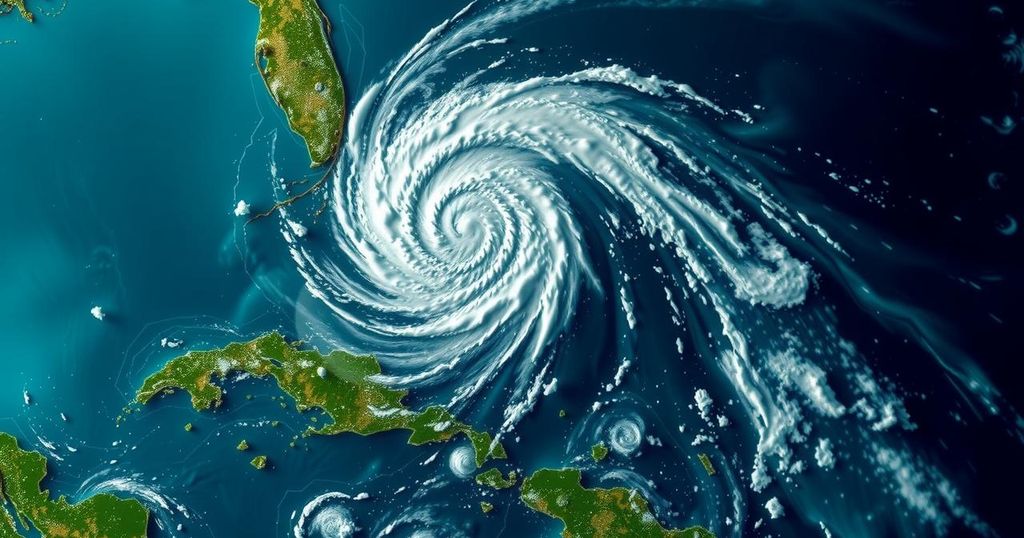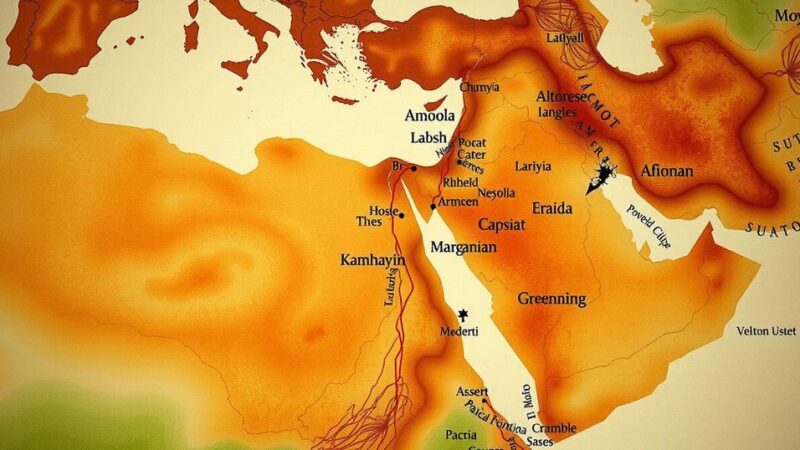The National Hurricane Center is monitoring three disturbances possibly leading to tropical cyclones, notably a system developing in the Gulf of Mexico. A 60% chance of formation is noted, with heavy rainfall expected in affected areas. Additional disturbances are observed in the Caribbean and northern Atlantic, though with lower likelihood of development.
The National Hurricane Center (NHC) is actively monitoring three significant meteorological disturbances that have the potential to evolve into tropical or subtropical cyclones. One of these disturbances is poised to develop into a notable system in the Gulf of Mexico within the upcoming week. Currently, according to the NHC, a broad area of low pressure is anticipated to form over the southwestern Caribbean Sea within the next day, with the likelihood of a tropical depression arising late this weekend or early next week as the system gradually drifts northward or northwestward through the central or western Caribbean Sea. The NHC alerts that, regardless of development, substantial local rainfall may occur across areas adjacent to the western Caribbean as well, estimating a probability of 60% for tropical cyclone formation over the next seven days. Forecast models are increasingly indicating that this disturbance could enter the Gulf of Mexico soon, potentially evolving into a tropical storm or more severe system. While it remains too premature to provide definitive conclusions, residents along the U.S. Gulf Coast are reminded that hurricane season continues until the end of the month. In addition to the Caribbean situation, the NHC is also assessing conditions in the northeastern Caribbean Sea and the Greater Antilles. Observations and satellite data suggest that a trough of low pressure near Puerto Rico is generating extensive cloud cover and rainfall affecting the Dominican Republic, Puerto Rico, the Virgin Islands, the northern Leeward Islands, as well as the surrounding Atlantic waters. There is a possibility of slow development for this weather system over the next few days as it migrates west-northwestward near the Greater Antilles, with predictions of this system ultimately merging into the broader low pressure area over the Caribbean. Heavy rainfall is also expected across the northern Leeward Islands, Puerto Rico, Hispaniola, eastern Cuba, and the southeastern Bahamas over the next few days. The third area under scrutiny is located in the northern Atlantic, where a non-tropical low pressure system has been identified approximately 450 miles west of the western Azores. This system is exhibiting limited shower activity, yet the NHC has assessed there is a potential for some subtropical development in the coming days. However, the current likelihood for this occurrence stands at only 20% within the next week.
The Atlantic hurricane season typically runs from June 1 to November 30 each year, during which meteorological phenomena can develop into formidable storms. The National Hurricane Center plays a crucial role in monitoring and forecasting these systems, providing real-time updates to warn affected regions and ensure preparedness. Forecasts rely on advanced global computer models to predict the track and intensity of disturbances, which helps in assessing potential impacts on coastal regions and inland areas alike. This article discusses three different areas of concern currently being monitored by the NHC, detailing their potential impacts and expected developments as the hurricane season lingers into its final weeks.
In summary, the National Hurricane Center is currently tracking three significant disturbances that may lead to the development of tropical or subtropical cyclones, particularly in the Gulf of Mexico and the Caribbean. With an increased probability of formation, residents along the Gulf Coast should remain vigilant. Moreover, while rainfall impacts are expected across several Caribbean islands, potential developments in the northern Atlantic present lesser, though noteworthy, concerns. Continuous monitoring by the NHC will provide crucial updates as these systems evolve.
Original Source: weatherboy.com






